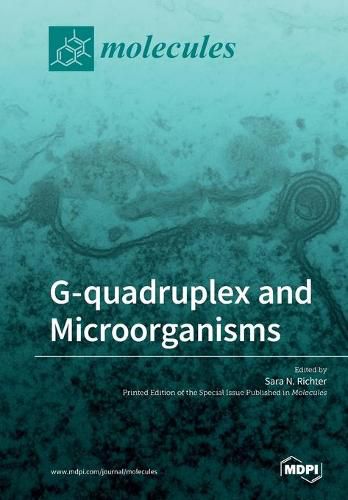Readings Newsletter
Become a Readings Member to make your shopping experience even easier.
Sign in or sign up for free!
You’re not far away from qualifying for FREE standard shipping within Australia
You’ve qualified for FREE standard shipping within Australia
The cart is loading…






This title is printed to order. This book may have been self-published. If so, we cannot guarantee the quality of the content. In the main most books will have gone through the editing process however some may not. We therefore suggest that you be aware of this before ordering this book. If in doubt check either the author or publisher’s details as we are unable to accept any returns unless they are faulty. Please contact us if you have any questions.
G-quadruplexes (G4s) are nucleic acids secondary structures that form in DNA or RNA guanine (G)-rich strands. In recent years, the presence of G4s in microorganisms has attracted increasing interest. In prokaryotes, G4 sequences have been reported in several human pathogens. Bacterial enzymes able to process G4s have been identified. In viruses, G4s have been suggested to be involved in key steps of the viral life cycle: They have been associated with the human immunodeficiency virus (HIV), herpes simplex virus 1 (HSV-1), human papilloma virus, swine pseudorabies virus, and other viruses’ genomes. New evidence shows the presence of G4s in parasitic protozoa, such as the causative agent of malaria. G4 binding proteins and mRNA G4s have been implicated in the regulation of microorganisms’ genome replication and translation. G4 ligands have been developed and tested both as tools to study the complexity of G4-mediated mechanisms in the viral life cycle and as therapeutic agents. Moreover, new techniques to study G4 folding and their interactions with proteins have been developed. This Special Issue will focus on G4s present in microorganisms, addressing all the above aspects.
$9.00 standard shipping within Australia
FREE standard shipping within Australia for orders over $100.00
Express & International shipping calculated at checkout
This title is printed to order. This book may have been self-published. If so, we cannot guarantee the quality of the content. In the main most books will have gone through the editing process however some may not. We therefore suggest that you be aware of this before ordering this book. If in doubt check either the author or publisher’s details as we are unable to accept any returns unless they are faulty. Please contact us if you have any questions.
G-quadruplexes (G4s) are nucleic acids secondary structures that form in DNA or RNA guanine (G)-rich strands. In recent years, the presence of G4s in microorganisms has attracted increasing interest. In prokaryotes, G4 sequences have been reported in several human pathogens. Bacterial enzymes able to process G4s have been identified. In viruses, G4s have been suggested to be involved in key steps of the viral life cycle: They have been associated with the human immunodeficiency virus (HIV), herpes simplex virus 1 (HSV-1), human papilloma virus, swine pseudorabies virus, and other viruses’ genomes. New evidence shows the presence of G4s in parasitic protozoa, such as the causative agent of malaria. G4 binding proteins and mRNA G4s have been implicated in the regulation of microorganisms’ genome replication and translation. G4 ligands have been developed and tested both as tools to study the complexity of G4-mediated mechanisms in the viral life cycle and as therapeutic agents. Moreover, new techniques to study G4 folding and their interactions with proteins have been developed. This Special Issue will focus on G4s present in microorganisms, addressing all the above aspects.